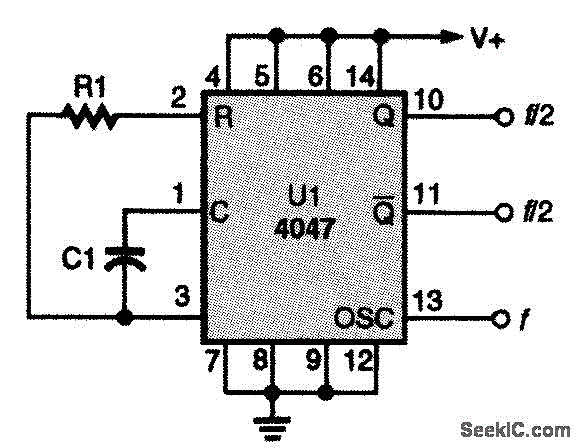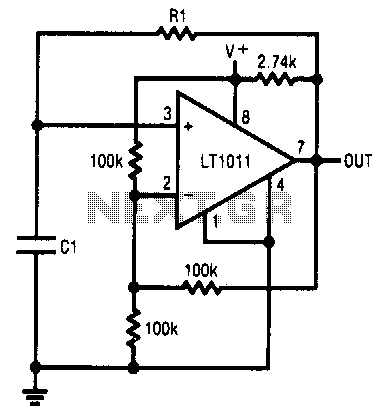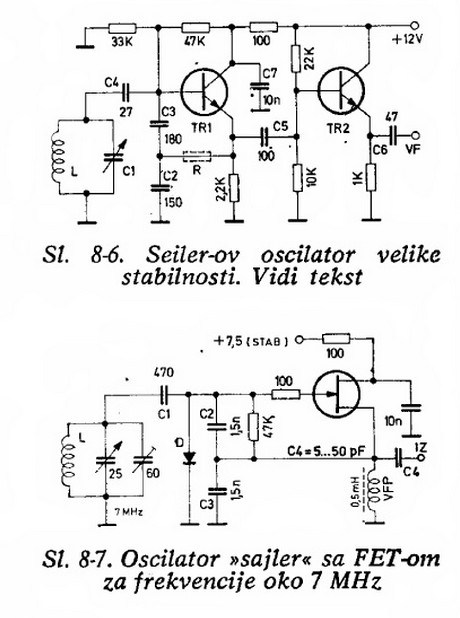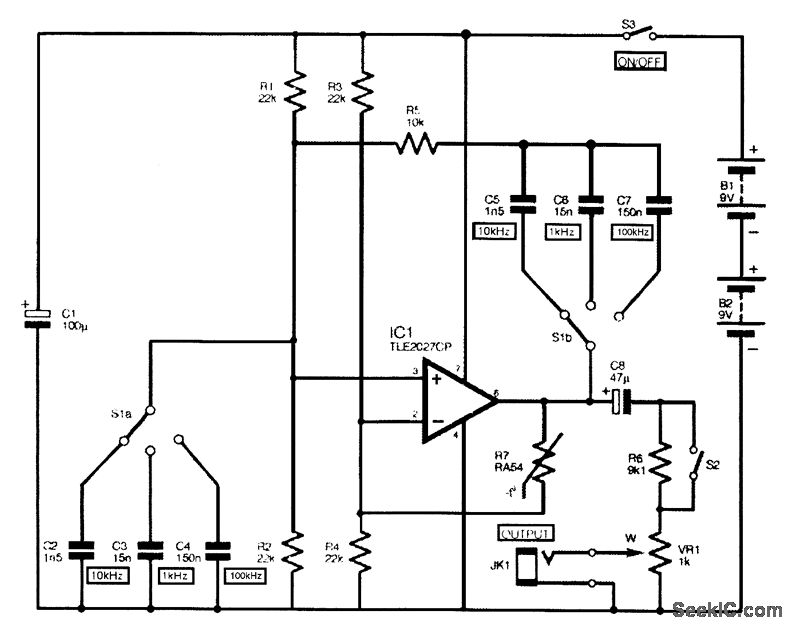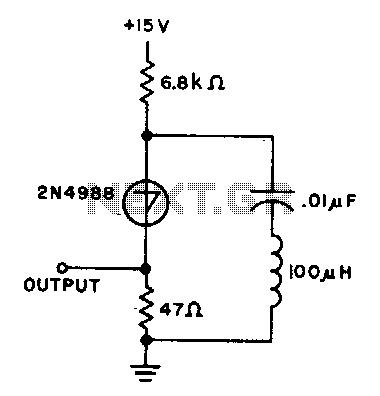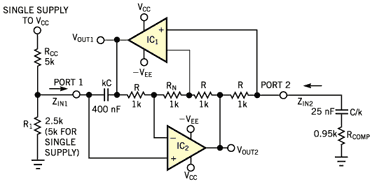
Pierce harmonic oscillator 100Mhz
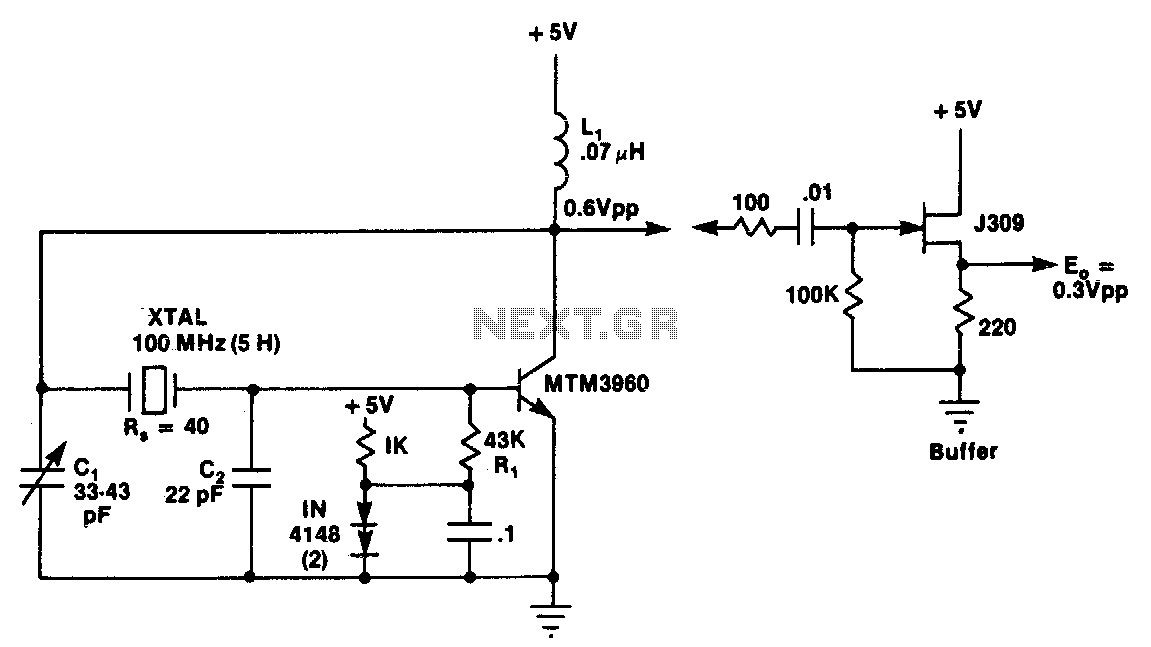
The current meter has a measurement range from 100 pA to 3 mA full scale. The voltage across the input is 100 µV at the lower ranges, increasing to 3 mV at 3 mA. Buffers on the operational amplifier are utilized to eliminate ambiguity during high-current overload conditions. Additionally, the output can drive a digital voltmeter (DVM) or a digital panel meter (DPM).
The current meter is designed to accurately measure low currents ranging from 100 picoamperes (pA) to 3 milliamperes (mA), providing versatility for various applications in electronic measurement. The input voltage levels are carefully calibrated, starting at 100 microvolts (µV) for the lowest current range and scaling up to 3 millivolts (mV) at the highest current measurement. This ensures that the meter can detect minute changes in current without introducing significant noise or error.
The inclusion of buffers on the operational amplifier (op-amp) serves a critical function by isolating the measurement circuit from the load, thus preventing any potential loading effects that could distort the readings, especially under high-current conditions. This design choice enhances the reliability and accuracy of the measurements by maintaining a consistent input impedance.
Furthermore, the capability of the output to drive a digital voltmeter (DVM) or a digital panel meter (DPM) extends the utility of the current meter. This feature allows for real-time display of measurements, facilitating easier interpretation of data. The design can be implemented in various applications, including laboratory measurements, industrial monitoring, and electronic testing, where precise current measurements are essential. The circuit's flexibility and robustness make it suitable for both research and practical field use.Current meter ranges from 100 pA to 3 mA full scale. Voltage across input is 100 µV at lower ranges rising to 3 mV at 3 mA. The buffers on the op amp are to remove ambiguity with high-current overload The output can also drive a DVM or a DPM.
The current meter is designed to accurately measure low currents ranging from 100 picoamperes (pA) to 3 milliamperes (mA), providing versatility for various applications in electronic measurement. The input voltage levels are carefully calibrated, starting at 100 microvolts (µV) for the lowest current range and scaling up to 3 millivolts (mV) at the highest current measurement. This ensures that the meter can detect minute changes in current without introducing significant noise or error.
The inclusion of buffers on the operational amplifier (op-amp) serves a critical function by isolating the measurement circuit from the load, thus preventing any potential loading effects that could distort the readings, especially under high-current conditions. This design choice enhances the reliability and accuracy of the measurements by maintaining a consistent input impedance.
Furthermore, the capability of the output to drive a digital voltmeter (DVM) or a digital panel meter (DPM) extends the utility of the current meter. This feature allows for real-time display of measurements, facilitating easier interpretation of data. The design can be implemented in various applications, including laboratory measurements, industrial monitoring, and electronic testing, where precise current measurements are essential. The circuit's flexibility and robustness make it suitable for both research and practical field use.Current meter ranges from 100 pA to 3 mA full scale. Voltage across input is 100 µV at lower ranges rising to 3 mV at 3 mA. The buffers on the op amp are to remove ambiguity with high-current overload The output can also drive a DVM or a DPM.
